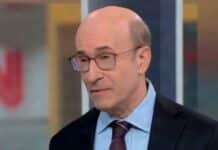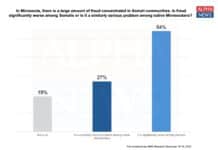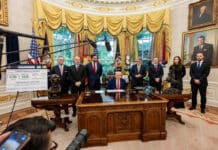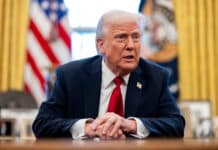We’ve all heard the media story repeated over and over again. Farmers are hurting from Trump’s trade war, because China has retaliated against President Trump’s tariffs on Chinese imports by buying less U.S. soybeans, and that explains why soybean prices are so low.
Here’s Minnesota’s Kare 11: “One thing farmers aren’t looking to buy: more uncertainty about trade with China, which has been the biggest buyer of Minnesota soybeans.” Another farmer who talked to Kare 11 complained about how hard it is to make a budget during the trade war.
But although the trade war doesn’t help soybean prices, the popular narrative just isn’t true.
African swine fever
In general, China is demanding less soybeans nowadays because so many of their pigs—possibly over one-third, which is more than the population of pigs in Europe—are dying from African swine fever (AFS). AFS kills over 90 percent of the pigs it infects, and is incredibly contagious.
If anything, soybean prices have been temporarily supported as China battles the epidemic because Chinese farmers are switching away from using feed laced with dead pig meat, which spreads the disease, to feed based solely on soybean meal.
But as China’s pigs keep dying, China is even buying less soybeans from Brazil, China’s alternative supplier of soybeans.
The dishonest coastal media has tried to say that the trade war is hurting pig farmers—except China vastly reduced its buying of U.S. pork in 2011. Why? China claimed that our pork was unsafe compared to Chinese pork, which only bolsters Trump’s case against China.
Not only that, despite tariffs, China’s purchases of U.S. pork have gone up this year, not down—precisely because so much of China’s pork supply is being wiped out.
The big price drop was in 2014
Next, just look at a chart of soybean prices, measured in dollars per bushel. Soybeans went from being around $6.00 per bushel in 2006, to moving sharply higher just before the financial crisis only to crash lower, to peaking at over $17.00 per bushel in 2012.
Then, in 2014, soybean prices crashed lower, and haven’t recovered since.

Here’s a chart of corn prices. Notice how it isn’t that different.

Although it would be nicer for farmers if prices were higher, it is objectively untrue that prices are swinging more now, because of the trade war. Price volatility was much higher earlier in the decade.
But why did prices shoot higher in 2010-11, then again in 2012, only to plunge in 2014?
The answer has everything to do with U.S. monetary policy. Before the Great Recession, the Fed started cutting interest rates, which weakened the dollar and caused commodity prices to surge (because commodities are traded globally and priced in dollars, a weaker dollar will mean a higher commodity price in dollars).
Likewise, in November of 2010 the Fed started its second round of QE, or “quantitative easing,” which is a fancy term for the Fed printing money to buy U.S. government bonds and mortgaged backed securities. The effect of QE is massive credit (debt) creation, and a weaker U.S. dollar, at least in the short term.
The second round, dubbed QE2, was massive compared to the first. It thus reduced the value of the dollar and caused increased debt-fueled demand globally. The next round, QE3 kicked in September 2012 (right before the presidential election), and lasted until October 2014.
In anticipation of the program ending in 2014, the dollar began to rise in that year and commodities—from oil to soybeans—plunged. As commodities plunged, the farm default cycle also began to pick up.
How often did you hear about soybean prices in the mainstream (non-ag) media in 2014, when they crashed by over $5.00 per bushel in a matter of months? I’m guessing you didn’t hear anything.
The point is that not much of what is going on now is due to the trade war. But farmers are truly hurting. The Fed’s QE programs made prices artificially and temporarily high, which tricked farmers into over-expanding. And the over-expanding looked even more attractive because the Fed’s bad monetary policy also made debt cheap, increasing the incentive for farmers to take on too much risk.
In other words, if farmers want to be mad at somebody in Washington they should be mad at the academics who sit in the Fed’s Eccles building.
What is the one thing that Washington could do, right now, that would help Minnesota farmers?
Easy. Pass the U.S.-Mexico-Canada trade agreement, or USMCA. But Democrats in the House have blocked USMCA—even though much of the agreement includes things that pro-labor Democrats have previously asked for—because they don’t want to give President Trump a win right before the 2020 election.
Why isn’t the media talking about that?
—
***
Do you like Alpha News? Help us reach more people in 2019 by donating today.











